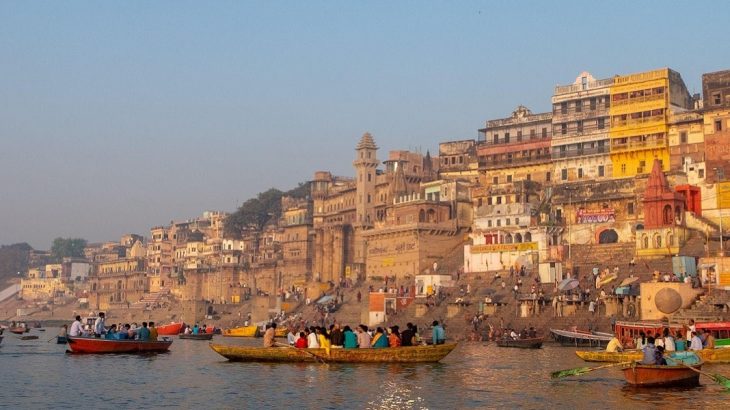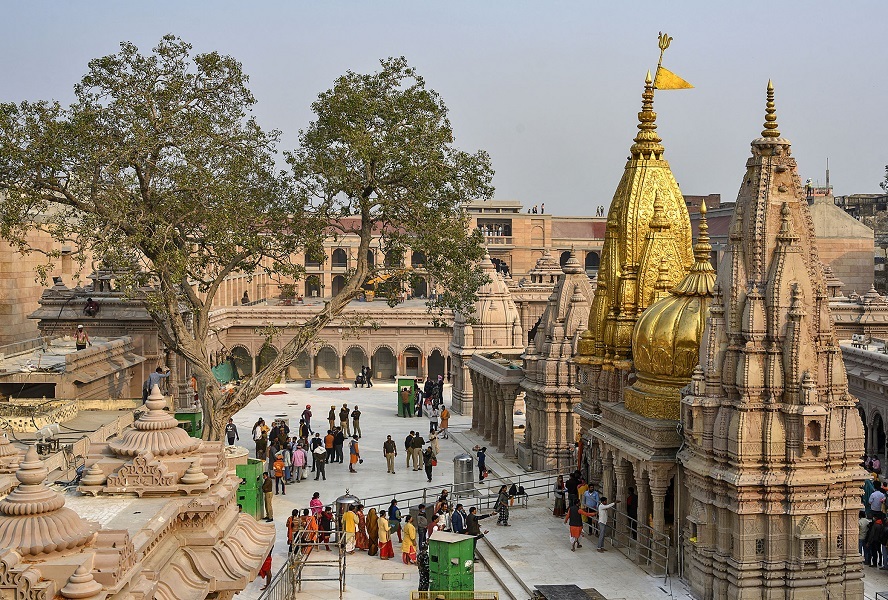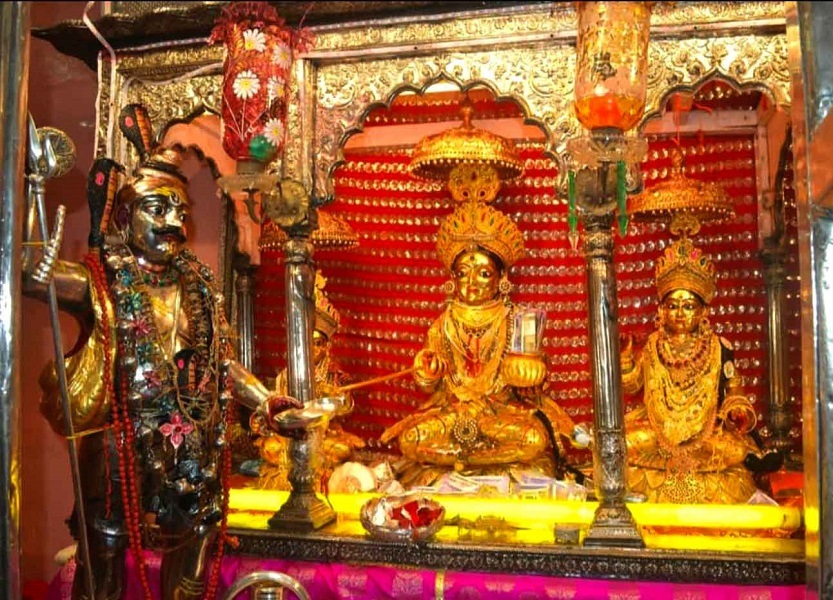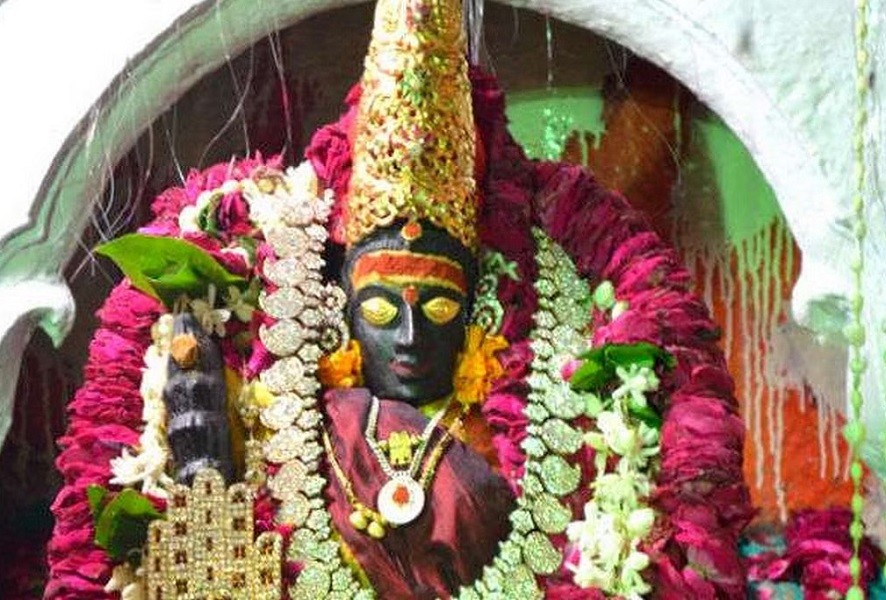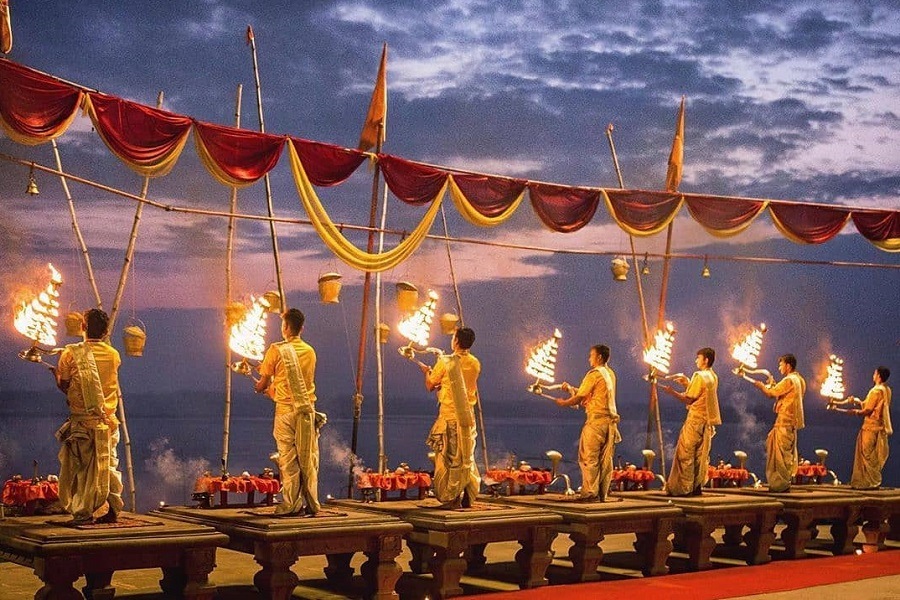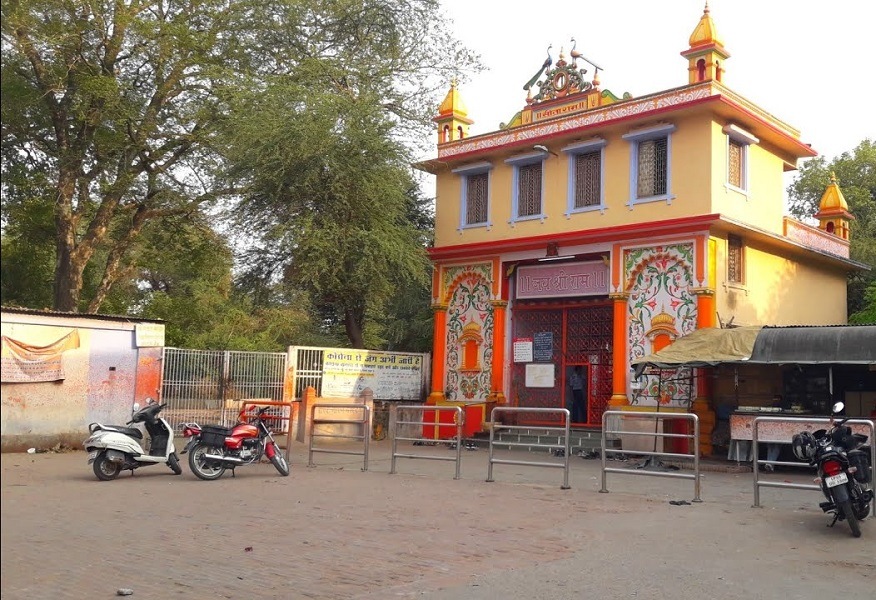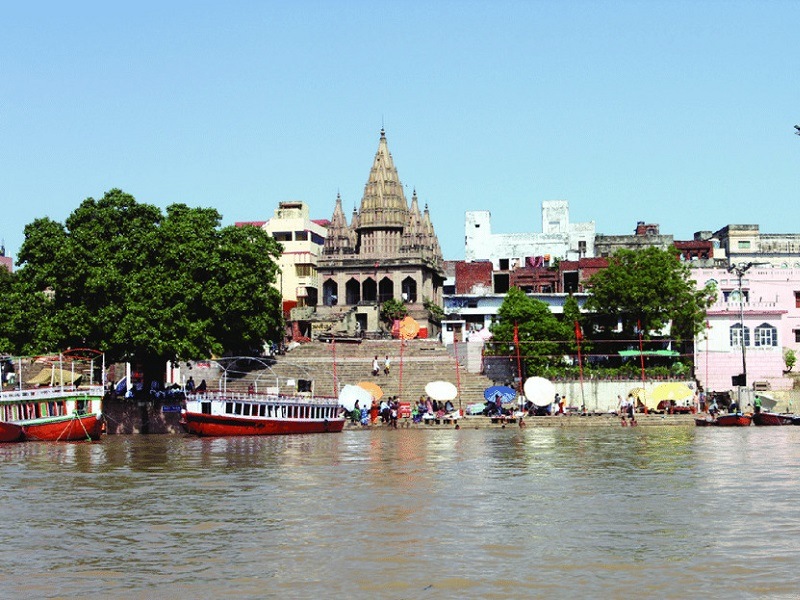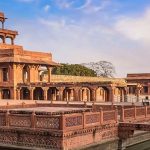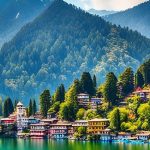Revered as the spiritual capital of India, Varanasi, or Banaras is one of the most famous religious places in India, and among the most popular places to visit near Patna. Located on the banks of the holy Ganga River, the world’s oldest continually inhabited city of Varanasi is surely a place for those who want to explore the mystical side of India as it is regarded as one of the seven holy cities of Hinduism. This ancient city, fondly called as Kashi, showcases a rich tapestry of Hinduism, Buddhism, and Jainism, featuring numerous temples, ashrams, stupas, viharas, and over 80 ghats lining the holy Ganges. The Ganga Aarti, a prominent attraction, draws countless devotees and visitors alike. If you find yourself with limited time in Varanasi and wish to visit the most sacred sites and popular attractions, consider this Varanasi 2-Day Trip itinerary to experience the essence of this divine city within 48 hours.
DAy 1 Places to Visit :
Kashi Vishwanath Temple
Located on the western bank of the sacred Ganges River, the Kashi Vishwanath Temple stands as one of the twelve jyotirlinga temples and is considered one of the most spiritually uplifting destinations within Varanasi tour packages. Commonly referred to as the Golden Temple, this revered site is dedicated to Lord Vishwanath, an incarnation of Lord Shiva, who is honored as the patron deity of Varanasi. The Vishwanath Jyotirlinga Temple holds immense religious importance and serves as a focal point of devotion for millions of Hindus. Recognized as one of the oldest, wealthiest, and most sacred pilgrimage sites in India, the temple features a magnificent structure adorned with approximately 800 kilograms of pure gold. Additionally, the temple complex includes several smaller shrines, such as those dedicated to Kaalbhairav, Vishnu, Virupaksh Gauri, Vinayaka, and Avimukteshwara.
Book Here : Varanasi Pilgrimage Packages
Annapurna Devi Mandir
Located near Kashi Vishwanath Temple, Annapurna Devi Mandir is another popular Hindu temple that one must visit as part of a Varanasi tour in 2 days. Established by Maratha Peshwa Baji Rao in 1729 AD, this temple is dedicated to Goddess Annapurna Devi, revered as the Goddess of Food and Nourishment. According to tradition, Goddess Parvati provided sustenance to Lord Shiva, and she is often depicted holding a bowl in one hand and a ladle in the other, serving food to Shiva, who stands before her with a begging bowl. Mata Annapurna is regarded as the protective deity of Varanasi, among the prominent places to visit near Delhi. The temple is constructed in the Nagara architectural style, and its sanctum contains two idols of Goddess Annapurna Devi: one crafted from gold and the other from brass. The brass idol is accessible for daily worship, while the gold idol can only be viewed once a year on Annakut day, which is celebrated annually after Diwali.
Book Here : Varanasi Heritage Tour Packages
Manikarnika Ghat
Located adjacent to Dasashwamedh Ghat, Manikarnika Ghat is recognized as one of the most sacred ghats along the banks of the River Ganga. Commonly referred to as Mahasmasana, it is one of the two cremation ghats in Varanasi, the other being Harishchandra Ghat. According to Hindu tradition, it is believed that the ear ornament of Sati fell at this site when Lord Shiva was transporting her body to the Himalayas. Manikarnika Ghat is one of the prominent places to visit in Varanasi. It is believed that performing cremation rites and spending one’s final days at this ghat leads to a peaceful death and facilitates the attainment of Moksha, liberating one from the cycle of rebirth. The ghat transforms into a captivating sight at sunset, with glowing pyres and candle-lit flower bowls gently drifting on the sacred waters of the Ganga. This intriguing ghat provides travelers with the chance to witness ritual cremations up close, and they may also partake in a boat tour along the Ganges River as part of their Varanasi tour from Delhi.
Book Here : Varanasi Family Tour Packages
Lalita Ghat & Nepali Temple
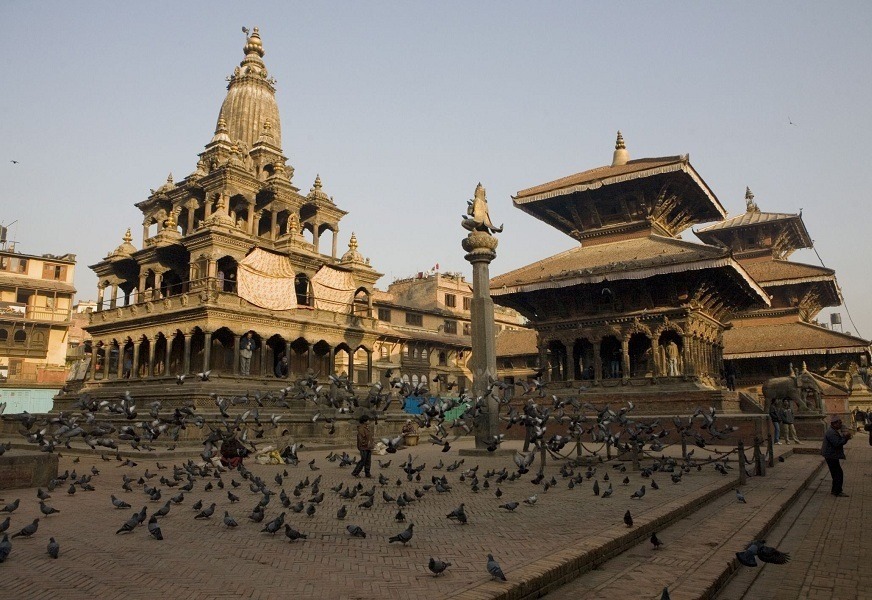
Lalita Ghat stands as one of the seven most significant ghats along the Ganges River in Varanasi recognized by the Varanasi Tourism Department. Constructed in the early 19th century CE by Rana Bahadur Shah, the King of Nepal, this ghat is dedicated to Lalita Devi, who is considered the embodiment of Goddess Durga. Lalita Ghat is associated with notable shrines, including the revered ‘lingam’ of Ganga Keshav, as well as the shrines of Gangatitya, Kashi Devi, Lalita Devi, and Bhagirath Tirtha. The Keshava Temple also referred to as Nepali Mandir, was built by the King of Nepal and showcases traditional Nepalese architectural style. Known as Kothwala Temple, it serves as a replica of the renowned Pashupatinath Temple located in Kathmandu. This temple is architecturally impressive, featuring intricate woodwork and red-hued concrete. A small statue of Nandi is positioned outside the main sanctum of the temple, which is among the most significant pilgrimage sites near Delhi.
Book Here : Varanasi Packages from Lucknow
Sri Kasi Vishalakshi Devi Temple
Sri Kashi Vishalakshi Temple is a prominent Hindu shrine located at Mir Ghat in Varanasi. In close proximity to the Kashi Vishwanath Mandir, it ranks among the most visited temples in Varanasi, an essential destination within Uttar Pradesh Tour Packages. This temple is dedicated to Goddess Vishalakshi Devi, who represents the divine aspect of Goddess Sati. It is recognized as one of the 51 Shakti Peethas, where one of the three eyes of Goddess Sati (Akshi) is believed to have fallen. The divine eye, which is said to encompass the entire universe, has led to the Mother being referred to as Vishalakshi, meaning the one with vast eyes. The temple is part of the renowned triad of temples, which includes Kanchi Kamakshi, Madurai Meenakshi, and Kashi Vishalakshi. The Vishalakshi Temple is particularly famous for the Kajali Teej festival, celebrated on the third day of the waning fortnight in the Hindu month of Bhadrapada (August), drawing numerous devotees as part of the Varanasi tour from Patna.
Also Visit : Prominent Pilgrimage Sites near Patna
Dasashwamedh Ghat
Dasashwamedh Ghat is situated along the banks of the River Ganga in the revered town of Varanasi, recognized as one of the most significant pilgrimage sites near Lucknow. It is said that Lord Brahma conducted his triumphant Dasa-Ashwamedha (ten-horse) sacrifice at this location, which is the origin of its name. Regarded as the principal ghat in Varanasi, it was constructed by Bajirao Peshwa I in 1740 AD and later renovated by Ahilyabai Holkar, the Queen of Indore, in 1774. The ghat is adorned with numerous temples and sacred sites, featuring well-structured steps and platforms designed for various rituals and religious practices integral to a visit to Varanasi. Dasashwamedh Ghat is particularly renowned for the Ganga Aarti held each evening, drawing many devotees and offering a truly unforgettable experience as part of the Varanasi tour. The Ganga Aarti commences with the sound of a conch shell, followed by the ceremonial aarti with large flaming lamps and the recitation of mantras.
Must Visit : Heritage Sites near Delhi
Day 2 Places to Visit :
New Vishwanath Temple / Birla Temple
The New Vishwanath Mandir is a Hindu temple located within the grounds of Banaras Hindu University (BHU) in Varanasi, recognized as one of the prominent places to visit near Lucknow. This temple, dedicated to Lord Shiva, stands as a significant religious site and a major tourist attraction in the sacred city of Varanasi. Commonly referred to as the Birla Temple, it was established by the renowned Birla family in 1966. The architectural design of the New Vishwanath Temple closely resembles that of the Kashi Vishwanath Temple. With a towering height of 253 feet, it boasts the tallest spire in the world. The temple complex comprises seven individual temples. The Shiva temple is located on the ground level, while the Durga temple and Lakshmi Narayan temple are situated on the first floor. Additional temples within the complex include those dedicated to Nataraja, Mata Parvati, Lord Ganesh, Panchmukhi Mahadev, Lord Hanuman, Saraswati, and Nandi. The temple draws large crowds during significant festivals such as Shivratri, Navratri, Krishna Janmashtami, Shravan Mahotsav, Annakut, and Deepawali.
Book Here : Varanasi Tour from Lucknow
Sankat Mochan Hanuman Mandir
The Sankat Mochan Hanuman Temple is a revered site located along the banks of the River Assi in Varanasi, making it one of the places to visit in Uttar Pradesh. Positioned in proximity to the Durgakund Temple, this temple is dedicated to Lord Hanuman and is recognized as one of the sacred temples in Kashi. The term “Sankat Mochan” translates to “deliverer from troubles.” Established by Tulsidas, the esteemed author of the Ramcharitmanas, the temple was constructed in the early 1900s under the guidance of Pandit Madan Mohan Malviya, the founder of Banaras Hindu University. It is believed that this temple was erected at the precise location where Tulsidas experienced a divine vision of Lord Hanuman. According to Vedic Astrology, Lord Hanuman is said to shield his followers from the wrath of the planet Saturn, prompting those with unfavorable Saturn placements in their horoscopes to seek remedies at Sankat Mochan Temple. In addition to regular visitors, the temple attracts thousands of devotees during significant events such as Hanuman Jayanti. A notable procession, known as the Shobha Yatra, commences from the Durgakund Temple during these celebrations. Furthermore, the temple hosts the ‘Sankat Mochan Sangeet Samaroh,’ an annual classical music and dance festival held in April, featuring artists from across India.
Must Visit : Tourist Places near Kanpur
Tulsi Manas Mandir
Tulsi Manas Mandir is a prominent Hindu temple located adjacent to the renowned Durgakund Temple in Varanasi, among the prominent significant pilgrimage sites near Kanpur. The temple is named in honor of the saint Tulsidas, a devoted follower of Lord Rama. Constructed in 1964 by Seth Ratan Lal Sureka from Bandhaghat (Howrah), this temple holds considerable historical and cultural significance within Hinduism. It is at this site that the revered Hindu epic Ramcharitmanas was originally composed by the poet-saint, reformer, and philosopher Goswami Tulsidas during the 16th century CE. The temple is built from white marble and is surrounded by exquisite landscaping. Its walls are adorned with depictions from the Ramcharitmanas, the Hindi rendition of the Ramayana. Additionally, the temple features beautiful representations of Ram, Sita, Lakshmana, and Hanuman, along with a serene Tulsi Garden that offers a tranquil and pristine atmosphere.
Book Here : Varanasi 3-Day Tour Packages
Assi Ghat
Located at the junction of the Ganga and Assi Rivers, Assi Ghat is the southernmost ghat in Kashi and serves as a significant destination in Varanasi. This ghat is frequently mentioned in ancient Hindu texts, including the Agni Purana, Matsya Purana, Padma Purana, Kurma Purana, and Kashi Khand. According to legend, Goddess Durga discarded her sword into the Assi River after vanquishing the demons Shumbha and Nishumbha. Also referred to as Asi Ghat, it is famous for housing a large Shiva Lingam beneath a Peepal Tree. Additionally, there exists another ancient temple that enshrines a Shiva Lingam known as Asisangameshwar Lingam. This site is historically significant as it is where the esteemed saint poet Tulasi Das completed his renowned work, Ramcharitmanas. Taking a holy dip in the Assi River during the auspicious month of Chaitra is believed to be particularly beneficial. The ghat attracts numerous devotees during solar and lunar eclipses, as well as on occasions such as Probodhoni Ekadashi, Ganga Dussehra, and Makar Sankranti, as part of their Varanasi tour from Kanpur.
Book Here : Varanasi 4-Day Tour Packages
